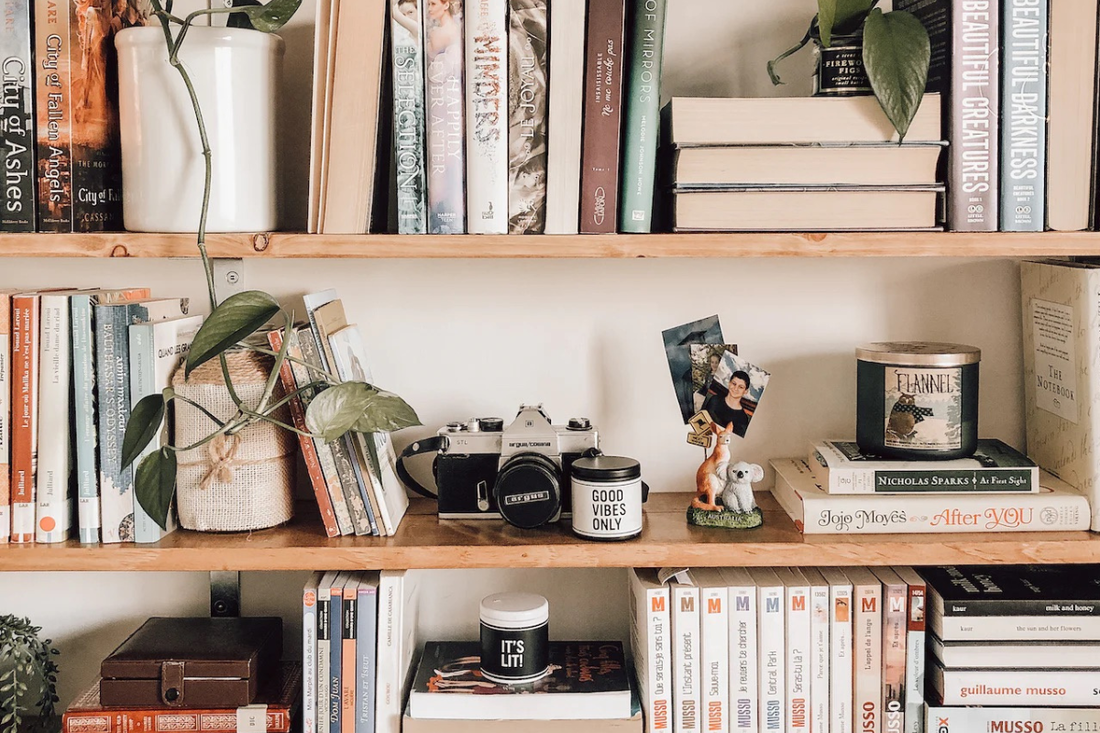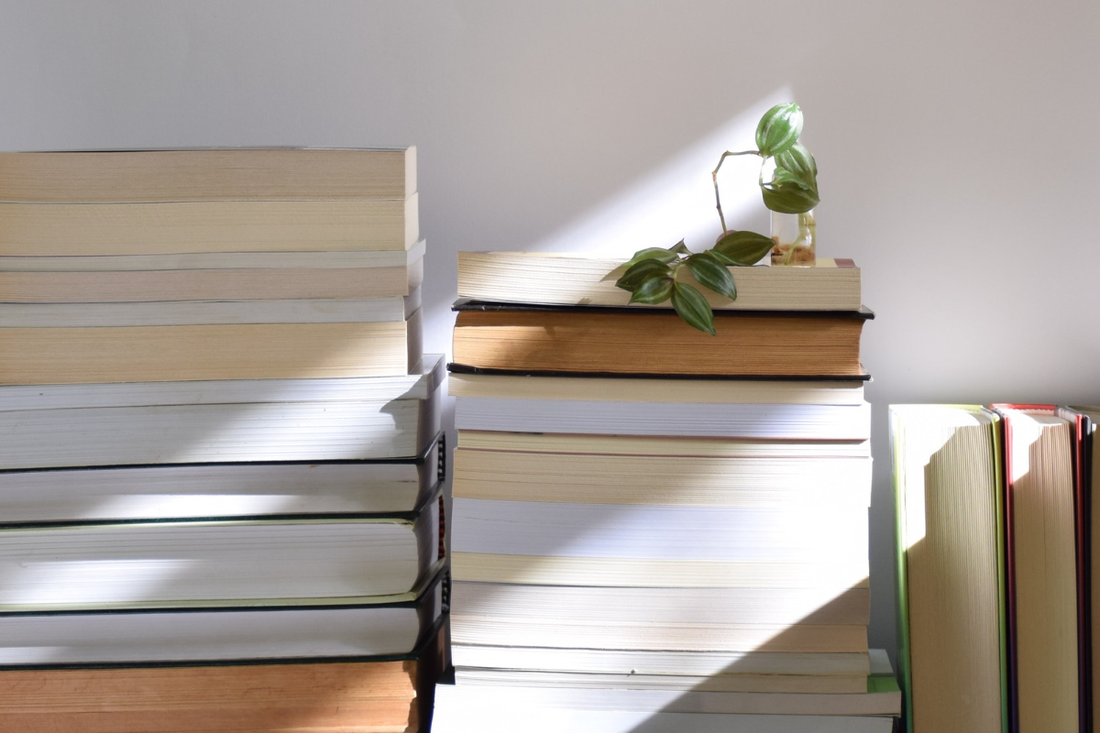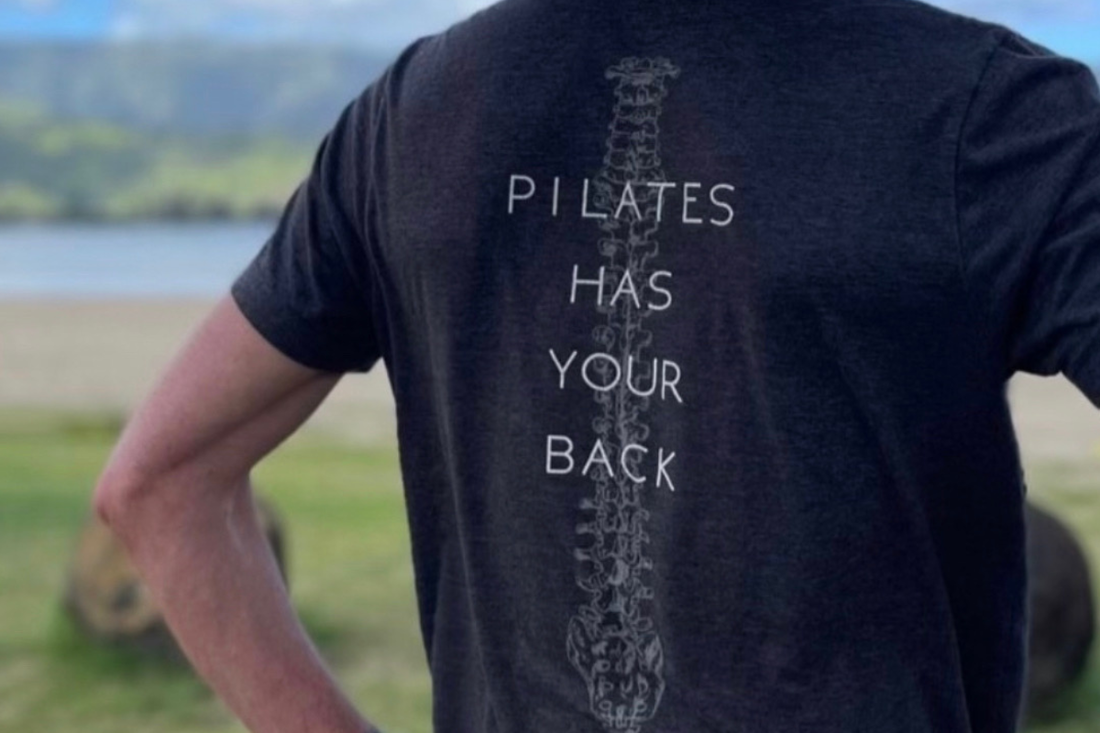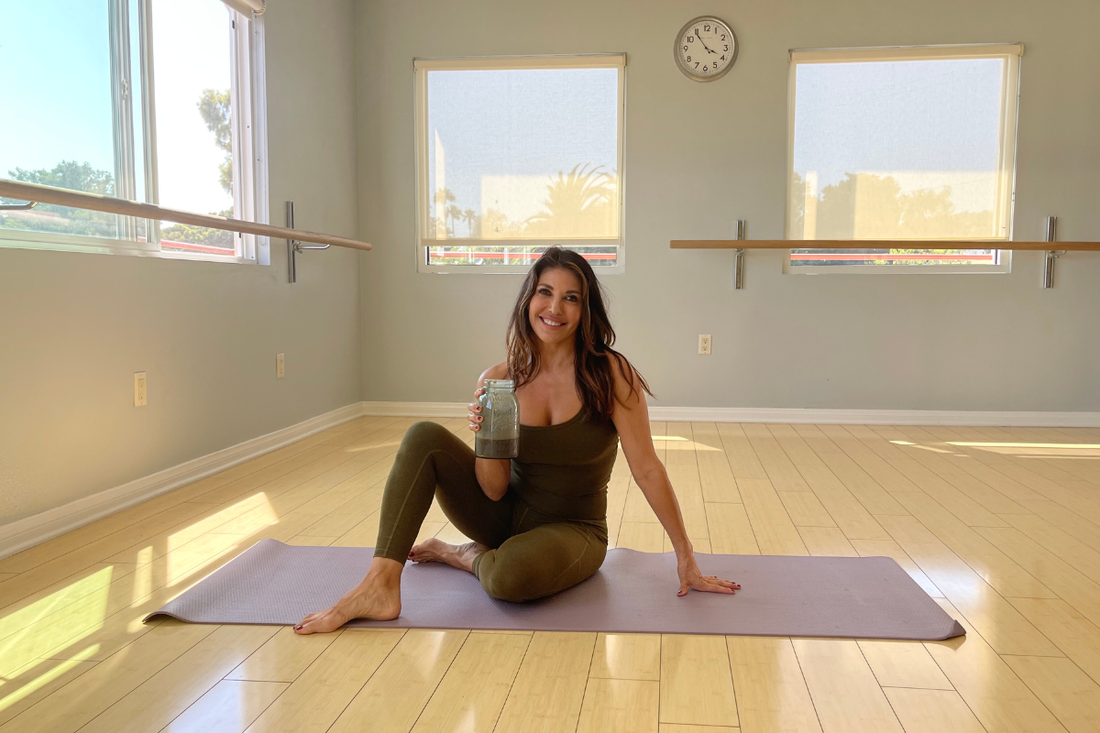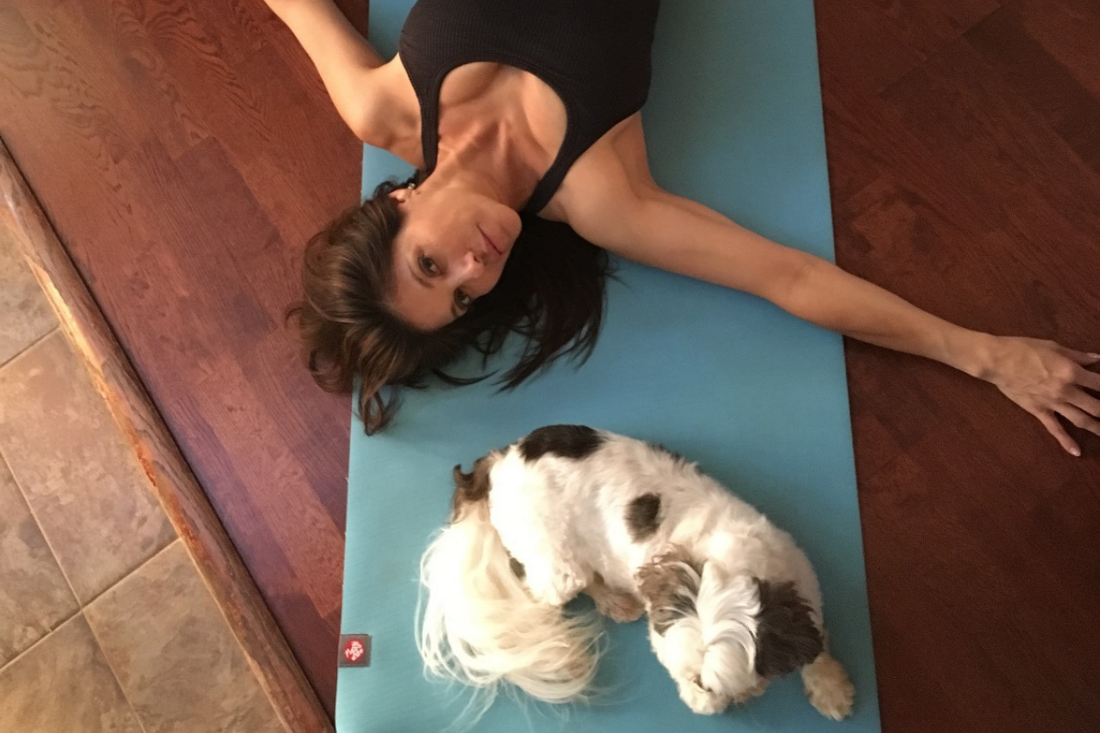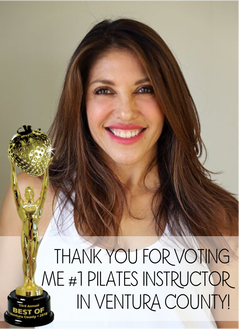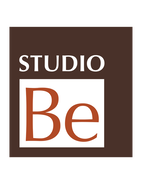|
Sharing my favorite books having to do with Pilates, health & wellness, nutrition, and personal development.
My top three reads for September: 1. "LIGHT ON LIFE" BY B.K.S. IYENGAR Authored by the hailed "Michelangelo of Yoga,” this book teaches how yoga can transform our lives and help us live in harmony with the world around us. Click here to buy. 2. "THE EARTH DIET" BY LIANA WERNER-GRAY Over 100 nutrient-dense, gluten-free recipes, tips for shifting out of toxic habits and lifestyle recipes for household, and personal-care products to help you heal in all areas of your life. Click here to buy. 3. "THE HORMONE RESET DIET" BY SARA GOTTFRIED, M.D. A good read for anyone over the age of 30 and based on leading scientific research, this book teaches you how to heal your metabolism and lose up to 15 pounds in 21 days—and just feel great! Click here to buy. What books are you loving right now? Let us know in the comments below!
0 Comments
There are so many books I want to share with you all, so I thought I’d start a little “book club” on the blog. Each month, I’ll share with you some of my top recommendations having to do with Pilates, health and wellness, nutrition, and personal development. I might even throw in a podcast here and there!
Here we go... my top three reads for August: 1. "THE PILATES BODY" BY BROOKE SILER My very first Pilates book and the perfect manual for students—beautiful illustrations, imagery and a strong foundation for understanding Pilates. Click here to buy. 2. "BREATH: THE NEW SCIENCE OF A LOST ART" BY JAMES NESTOR For anyone looking to improve their overall health—Pilates and beyond. Click here to buy. 3. "JUDGMENT DETOX" BY GABRIELLE BERNSTEIN For anyone looking to improve their mental wellbeing—a step-by-step process to release beliefs that hold you back from living a better life. Click here to buy. What books are you loving right now? Let us know in the comments below! I hear complaints about lower back pain all the time from friends, family and my students. I always have a simple, one-word answer for them: Pilates.
Let’s talk about it. Common Reasons For Lower Back Pain First, it’s important to identify why you are experiencing frequent lower back pain. Here are some of potential (and incredibly common) culprits:
Pilates For Lower Back Pain The philosophy of Pilates is focused on training and conditioning the entire body. It teaches us to move from our center as well as how to breathe properly to engage and strengthen our core, which leads to better posture and awareness. The Pilates method, known for rehabilitating injuries, is recognized by orthopedic doctors and physical therapists around the world. In fact, Pilates can sometimes be more effective than other physical treatments because the practice works your entire body while retraining proper functional movements. However, it’s important to note that if you’ve had surgery or a major injury, physical therapy is always the first step towards rehabilitation. Pilates can begin once your doctor has authorized it as a continuation of your therapy. Here are some of the many restorative benefits of Pilates:
When we talk about core strength in Pilates, we often use the word “Powerhouse,” which includes more than just abdominal muscles. Your “Powerhouse” encompasses your abdominal muscles, as well as your lower back muscles, pelvic floor, the muscles around your hips and your glutes. All of these muscles work together to form a supportive corset for your trunk; they stabilize the body. Read more about the Pilates “Powerhouse” here. The Transverses Abdominals, specifically—one of the many “Powerhouse” muscles—is a deep abdominal muscle that directly supports your lumbar spine (lower back area). People who experience chronic lower back pain often have weak Transverses Abdominals. This means they have a lack of support and stability of the spine when completing everyday tasks like sitting, standing, lifting or carrying things. Consistent Pilates exercises improve the strength, flexibility and suppleness of all of these important muscles and, over time, help to alleviate and prevent lower back pain. Get Started With Pilates If you’re experiencing chronic lower back pain, you would benefit most from several one-on-one sessions with a highly qualified Pilates instructor. Pilates is all about technique. Jumping right in—and moving too fast without proper form—can lead to more injury. (Please note, it’s always important to consult your doctor before trying a new workout.) If you’re ready to get started with Pilates, take advantage of our exclusive new student special: 3 private sessions for $225. In recent years, you’ve probably heard of intermittent fasting. It’s one of the most popular health trends out there. You may be an advocate of intermittent fasting already. Or maybe you have questions…
Is it good for you? Is it a diet? A lifestyle? A myth? In this blog, I explain how intermittent fasting works and give you some ways to approach this way of eating—including my own daily routine as a Pilates instructor. What Is Intermittent Fasting? Simply put, intermittent fasting is an eating pattern. It’s about when you eat, not necessarily what you eat. It’s more of a lifestyle than a diet. According to Johns Hopkins neuroscientist Mark Mattson, our bodies have evolved to go without food for many hours—or even several days or longer. Back when humans were mainly hunters and gatherers, they went long periods without eating, as it often took time and lots of energy to obtain food. After a certain number of hours without food, your body exhausts its sugar stores and starts to burn fat (this is also known as metabolic switching). Intermittent fasting works by prolonging this period with the goal of burning more fat. Studies have shown that intermittent fasting can have positive effects on your body and brain. And it may even elongate life. Ways To Approach Intermittent Fasting These are the top three most popular methods of intermittent fasting according to Healthline:
There are many ways to go about intermittent fasting. Below, I give you an example of how I usually eat in a day with a 18/6 schedule—a slightly stricter version of the 16/8 method. My Ideal Intermittent Fasting Schedule With a 18/6 schedule, my eating period falls between 1 p.m. and 6 p.m. and creates a 5-to-6-hour window. Here's a typical day of eating for me as a Pilates instructor:
Please note, I’m not perfect. There are times when I go out and splurge—and you should, too! I try to do my best to get as many days in as possible. When I stick to this schedule is when I feel my healthiest. Final Thoughts If you’re looking to lose weight and trim fat, intermittent fasting is proven to be successful. Pilates alone is not enough to lose weight, so pairing your workouts with a healthy eating program is vital if losing weight is your goal. The key to success? Liquids, liquids, liquids. I swear by them. Invest in a good, clean protein powder (meaning as little ingredients as possible) and bone broth (or try making your own). These will help you get through your fasting periods and help keep you nourished. “Nature is an important need for many and vital in keeping us emotionally, psychologically, and physically healthy” – Mental Health Foundation.
There’s so much to be said about being outside in nature and how it impacts our overall health and well-being. When we spend time moving outdoors, or even just sitting still—breathing in fresh air and truly being present—it can have magical effects on both body and mind. I often think of sunrays as downloads. The beams give our body updates—upgrades if you will, to our physical and mental health. Simply getting out and spending time in nature has the following science-backed benefits. Strengthens The Nervous System The nervous system’s natural state is called the parasympathetic state (AKA “relaxed”). This is when it does its best work, helping all the parts of the body communicate with each other. In today’s world, many of us spend a lot of time in a stressed state, where the nervous system goes into “fight or flight” mode and stays there longer than it should. With chronic stress sometimes taking a toll on our daily lives, it’s important to make a conscious effort to bring the body back into a state of calmness, so the nervous system can go back into its parasympathetic state. Spending time in nature has been shown to bring calmness and reduce stress, allowing the nervous system to relax, as well. Boosts The Immune System A healthy immune system reduces risk of illness and infection, lessens fatigue and helps the body heal faster. There have been many studies associating low vitamin D levels with increased infection. Vitamin D is referred to as “the sunshine vitamin” because the sun is one of the best sources of this nutrient, and it just so happens to be critical for your immune health. Being out in nature, and thus consistently exposed to sunlight, helps strengthen your immune system. Another way to understand the relationship between nature, health and the immune system, according to Science Daily, is that exposure to nature shifts the body into "rest and digest" mode, which is the opposite of the "fight or flight" mode we discussed above. When we are out in nature, in a relaxed state, our body can invest resources toward the immune system—making it stronger and making us healthier. Enhances Mental Health & Well-being Being in nature generates many positive emotions, such as calmness, joy and creativity. The biophilia hypothesis suggests that humans have an innate tendency to seek connections with nature, since our ancestors evolved in wild settings and relied on the environment for survival. The American Psychological Association (APA) reports that exposure to nature is linked to a host of benefits, including:
The APA also reports that human contact with nature is associated with increases in overall happiness, subjective well-being and a sense of meaning and purpose in life. Practical Ways To Spend More Time In Nature Since spending time in nature can mean many things, the benefits are available to each and every one of us, no matter where we live—whether it be green spaces such as parks or forests or blue spaces like rivers, beaches or canals. Nature also means trees on an urban street or private backyard gardens. Looking for more practical ways to spend time in nature? Here are some ideas:
Work deadlines, relationships, busy schedules, finances, life-changing medical diagnoses, world pandemics, the list goes on…
Stress: we’ve all felt it. It’s all around us and it can come and go—and sometimes consume—our daily lives. Some stress is okay. In fact, it’s a perfectly normal and expected part of life. It’s the body’s natural reaction that kicks in to protect us from threats. According to the American Psychological Association, stress floods the body with hormones that elevate your heart rate, increase your blood pressure and boost your energy—all to help you deal with the problem at hand. Long-term stress, also known as chronic stress, occurs when your body gets “stuck” in this position, and this is when it can have some seriously negative impacts on your body including:
It’s important to manage stress so that it is only brief, occasional and a positive motivating force—instead of long-term and all-consuming to a point that it is detrimental to one’s health. Pilates is a tool that can be used to actively manage stress through movement, mindfulness, breathing and routine. 4 Ways Pilates Helps Manage Stress Movement The physical movement that takes place during a Pilates workout helps fight stress like any other form of physical activity. Getting your body moving releases “mood elevating” endorphins in the brain as well as relaxes your muscles and relieves tension. The body and mind are closely linked, so when your body feels better, your mind should, too. When your body and mind are in the present moment with your breath, it’s like an active meditation and your nervous system relaxes in a beautiful, harmonious way. Mindfulness The very foundation of the Pilates method is centered around both body and mind. Exercise itself is a mood-elevating activity, thanks to the release of those endorphins mentioned above, but Pilates takes things a step further. Joe Pilates designed his practice to take the individual out of their “head” and into their body through breath, control, precision, centering, concentration and flow (also known as the 6 guiding principles of Pilates). Practicing Pilates regularly will sharpen your mental focus and exercise your brain for optimal awareness, in and out of the studio—which is why we call Pilates a lifestyle. Breathing According to The American Institute of Stress, daily abdominal breathing for 20 to 30 minutes is proven to help reduce stress and anxiety. Deep, intentional breathing increases the supply of oxygen to your brain and stimulates the parasympathetic nervous system, promoting a state of calmness. Joe Pilates, the creator of the Pilates method, knew the importance of breathing. He believed that inhaling fresh air and exhaling stale air promotes a path towards “total health.” Each Pilates workout—whether on the mat or apparatus—is centered around breathing, which reduces stress and improves mental clarity. Routine Having a normal routine is a great way to manage stress since not having one can often lead to feelings of, “when will I get it all done?” Routines also help carve out more time to truly relax and take time for yourself. Regularly attending Pilates classes can become a part of your daily or weekly routine, making sure you always take a little bit of time to be active. I’ve also found that having a routine and committing to a daily workout can help encourage healthier choices throughout the day. For example, knowing you have a scheduled workout class later in the day might make you opt for the healthier lunch option that leaves you feeling lighter and properly nourished for exercise. Living The Pilates Way If you find yourself consumed by chronic stress or anxiety, Pilates is a great outlet. This is because the Pilates method is more than just a workout—it’s a way of life. Through movement, mindfulness, intentional breathing and routine, you can live the Pilates way in and out of the studio. We invite you to come try it out for yourself! If you’re new to the Pilates world, the best way to get started is taking a private class to learn the proper movements. For a limited time, we’re offering 3 private sessions for only $225. |
About The AuthorFitness has always been a guiding force for Kathy Lopez, owner of Studio Be. Her inherent drive for health has naturally translated into helping others achieve strength, balance and wellness. Kathy has been voted Ventura's best Pilates instructor nine years in a row. Learn more... Categories
All
|
Be Strong. Be Flexible. Be Well.[ Home ] [ Our Services ] [ Our Instructors ] [ Class Schedules ] [ New Students ] [ Get in Touch ] [ Specials ]
1455 E. Main Street. Suite 200, Ventura, CA 93001
Copyright © Studio Be, 2017. All rights reserved.
|

